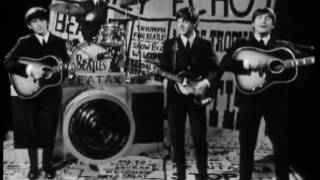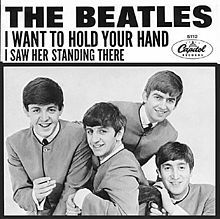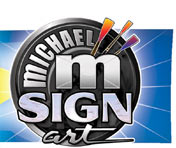| You are not logged in. | login to customize your own personal play list |
“I Want to Hold Your Hand” by the Beatles |
| United States Federal Trade Commission forbids anyone under 13 from viewing these music videos! |
| You are not logged in. | login to customize your own personal play list |
“I Want to Hold Your Hand” by the Beatles |
| United States Federal Trade Commission forbids anyone under 13 from viewing these music videos! |
 |
 |
 |
 |
You need Flash player 8+ and JavaScript enabled to view this video.
|
 |
 |
   |
 |

song info
 “I Want to Hold Your hand” by the Beatles (official video) is a classic rock song. Song Title: I Want to Hold Your Hand (official video)Artist: the Beatles Genre: classic rock, rock, pop Composer: Copyright © 1963 John Lennon-Paul McCartney Musical key: G Major Lead Vocals: John Lennon, Paul McCartney Rhythm Guitar: John Lennon Bass Guitar: Paul McCartney Drums: Ringo Starr Hand claps: George Harrison, John Lennon, Paul McCartney, Ringo Starr Producer: George Martin Recorded: October 17, 1963, EMI Studios, Studio 2, London, England Released: 29 November 1963 (UK), 26 December 1963 (US) Format: 7" 45-rpm vinyl single B-side: “This Boy” (UK) “I Saw Her Standing There” (US) Label: Parlophone (UK), Capitol (US) Rolling Stone 100 Greatest Beatles Songs: I Want to Hold Your Hand (official video) was selected number two (2) in Rolling Stone Magazine’s 100 Greatest Beatles Songs in 2010. See Rolling Stone. Number of listens: 46517Current rank: 45 (updated weekly) Highest rank: 15 (play the video all the way through to register a vote for this song) Translations courtesy of Apple and Google. |
||

Summary quotation from Wikipedia:
“I Want to Hold Your Hand” is a song by the English rock band The Beatles. Written by John Lennon and Paul McCartney, and recorded in October 1963, it was the first Beatles record to be made using four-track equipment.
With advance orders exceeding one million copies in the United Kingdom, “I Want to Hold Your Hand” would ordinarily have gone straight to the top of the British record charts on its day of release (29 November 1963) had it not been blocked by the group’s first million seller “She Loves You”, the Beatles’ previous UK single, which was having a resurgent spell in the top position following intense media coverage of the group. Taking two weeks to dislodge its predecessor, “I Want to Hold Your Hand” stayed at number one for five weeks and remained in the UK top fifty for twenty-one weeks in total. “I Want to Hold Your Hand” was the band’s first number-one hit on the Billboard Hot 100 chart, starting the British Invasion of the American music charts. The song entered the chart on 18 January 1964 at number 45; by 1 February, it held the number one spot — for seven weeks — and ended up charting for 15 weeks. It also held the top spot in the British charts. A million copies of the single had already been ordered on its release. “I Want to Hold Your Hand” became the Beatles’ best-selling single worldwide.
Background and composition
Although it is said that Brian Epstein had encouraged Lennon and McCartney to write a song to appeal to American listeners this has been denied by George Martin. McCartney had recently moved into 57 Wimpole Street, London, where he was living as a guest of Dr Richard and Margaret Asher, whose daughter, actress Jane Asher, had become McCartney’s girlfriend after meeting him earlier in the year. This location briefly became Lennon and McCartney’s new writing base, taking over from McCartney’s Forthlin Road home in Liverpool. Margaret Asher taught the oboe in the “small, rather stuffy music room” in the basement where Lennon and McCartney sat at the piano and composed ‘I Want to Hold Your Hand’. In September 1980, Lennon told Playboy magazine:We wrote a lot of stuff together, one on one, eyeball to eyeball. Like in ‘I Want to Hold Your Hand,’ I remember when we got the chord that made the song. We were in Jane Asher’s house, downstairs in the cellar playing on the piano at the same time. And we had, ‘Oh you-u-u/ got that something…’ And Paul hits this chord [E minor] and I turn to him and say, ‘That’s it!’ I said, ‘Do that again!’ In those days, we really used to absolutely write like that — both playing into each other’s noses.In 1994, McCartney agreed with Lennon’s description of the circumstances surrounding the composition of “I Want to Hold Your Hand”, saying:‘Eyeball to eyeball’ is a very good description of it. That’s exactly how it was. ‘I Want to Hold Your Hand’ was very co-written. It was our big number one; the one that would eventually break us in America.Musical structure
The song is in the key of G and opens on “I’ll tell you” with a D-B, B-D melody note drop and rise over a I (G) chord. Controversy exists over the landmark chord that Lennon stated McCartney hit on the piano while they were composing the song. Marshall considers it is the minor vi (Em) chord (the third chord in the I-V7-vi (G-D7-Em) progression). Everett is of the same opinion. Pedler claims, however, that more surprising is the melody note drop from B to F♯ against a III7 (B7) chord on “understand”. Music theorists are divided over whether this chord is a iii (Bm), a B major, or a B7 or even a B5 power chord with no major or minor defining third.
In the studio
The Beatles started recording “I Want to Hold Your Hand” at EMI Studios in Studio 2 on 17 October 1963. This song, along with the single’s flip side, “This Boy”, was the first Beatles song to be recorded with four-track technology. The two songs were recorded on the same day, and each needed seventeen takes to complete. Also, the Beatles were experimenting with organ-sounding guitars, which was achieved by extreme compression on John Lennon’s rhythm guitar. Mono and stereo mixing was done by George Martin on 21 October 1963; further stereo mixes were done on 8 June 1965, for compilations released by EMI affiliates in Australia and the Netherlands, and on 7 November 1966.
“I Want to Hold Your Hand” was one of two Beatles songs (along with “She Loves You” as “Sie liebt dich”) to be later recorded in German, entitled “Komm, gib mir deine Hand”. Both songs were translated by Luxembourger musician Camillo Felgen, under the pseudonym of “Jean Nicolas”. Odeon, the German arm of EMI (the parent company of the Beatles’ record label, Parlophone) was convinced that the Beatles’ records would not sell in Germany unless they were sung in German. The Beatles detested the idea, and when they were due to record the German version on 27 January 1964 at EMI’s Pathe Marconi Studios in Paris (where the Beatles were performing 18 days of concerts at the Olympia Theatre) they chose to boycott the session. Their record producer, George Martin, having waited some hours for them to show up, was outraged and insisted that they give it a try. Two days later, the Beatles recorded “Komm, gib mir deine Hand”, one of the few times in their career that they recorded outside of London. However, Martin later conceded: “They were right, actually, it wasn’t necessary for them to record in German, but they weren’t graceless, they did a good job”.
“Komm, gib mir deine Hand” appeared in full stereo in the United States on the Capitol LP Something New and years later on the Capitol CD compilation called The Capitol Albums, Volume 1.
The German-language track was a big hit in Germany at the time, but today, like all the other German-lyrics versions of English-language pop songs that were popular in that country during the 1950s and 1960s, it is generally considered as a cultural curiosity from a by-gone era at best. The English versions are much better known in Germany today; the Beatles’ Red and Blue albums of the 1970s already featured the English hits on the German pressings.
Promotion and release
In the United Kingdom, “She Loves You” (released in August) had shot back to the number one position in November following blanket media coverage of the Beatles (described as Beatlemania). Mark Lewisohn later wrote: “‘She Loves You’ had already sold an industry-boggling three quarters of a million before these fresh converts were pushing it into seven figures. And at this very moment, just four weeks before Christmas, with everyone connected to the music and relevant retail industries already lying prone in paroxysms of unimaginable delight, EMI pulled the trigger and released ‘I Want To Hold Your Hand’. And then it was bloody pandemonium”.
On 29 November 1963, Parlophone Records released “I Want to Hold Your Hand” in the UK, with “This Boy” joining it on the single’s B-side. Demand had been building for quite a while, as evidenced by the one million advance orders for the single. When it was finally released, the response was phenomenal. A week after it entered the British charts, on 14 December 1963, it knocked “She Loves You”, another Beatles song, off the top spot, the first such instance of the same act taking over from itself at number one in British history, clinging to the top spot for five full weeks. It stayed in the charts for another fifteen weeks afterwards and incredibly made a one-week return to the charts on 16 May 1964. Beatlemania was peaking at that time; during the same period, the Beatles set a record by occupying the top two positions on both the album and single charts in the UK.
EMI and Brian Epstein finally convinced American label Capitol Records, a subsidiary of EMI, that the Beatles could make an impact in the US, leading to the release of “I Want to Hold Your Hand” with “I Saw Her Standing There” on the B-Side as a single on 26 December 1963. Capitol had previously resisted issuing Beatle recordings in the US. This resulted in the relatively modest Vee-Jay and Swan labels releasing the group’s earlier Parlophone counterparts in the US. Seizing the opportunity, Epstein demanded US$40,000 from Capitol to promote the single (the most the Beatles had ever previously spent on an advertising campaign was US$5,000). The single had actually been intended for release in mid-January 1964, coinciding with the planned appearance of the Beatles on The Ed Sullivan Show. However, a 14-year-old fan of the Beatles, Marsha Albert, was determined to get hold of the single earlier. Later she said:It wasn’t so much what I had seen, it’s what I had heard. They had a scene where they played a clip of ‘She Loves You’ and I thought it was a great song … I wrote that I thought the Beatles would be really popular here, and if [deejay Carroll James] could get one of their records, that would really be great.James was the DJ for WWDC, a radio station in Washington, DC. Eventually he decided to pursue Albert’s suggestion to him and asked the station’s promotion director to get British Overseas Airways Corporation to ship in a copy of “I Want to Hold Your Hand” from Britain. Albert related what happened next: “Carroll James called me up the day he got the record and said ‘If you can get down here by 5 o’clock, we’ll let you introduce it.’” Albert managed to get to the station in time, and introduced the record with: “Ladies and gentlemen, for the first time on the air in the United States, here are the Beatles singing ‘I Want to Hold Your Hand.’”
The song proved to be a huge hit, a surprise for the station since they catered mainly to a more staid audience, which would normally be expecting songs from singers such as Andy Williams or Bobby Vinton instead of rock and roll. James took to playing the song repeatedly on the station, often turning down the song in the middle to make the declaration, “This is a Carroll James exclusive”, to avoid theft of the song by other stations.
Capitol threatened to seek a court order banning airplay of “I Want to Hold Your Hand”, which was already being spread by James to a couple of DJs in Chicago and St. Louis. James and WWDC ignored the threat, and Capitol came to the conclusion that they could well take advantage of the publicity, releasing the single two weeks ahead of schedule on 26 December.
The demand was insatiable; in the first three days alone, a quarter million copies had already been sold (10,000 copies In New York City every hour). Capitol was so overloaded by the demand, it contracted part of the job of pressing copies off to Columbia Records and RCA. By 18 January, the song had started its fifteen-week chart run, and on 1 February, the Beatles finally achieved their first number-one in America, emulating the success of another British group, the Tornados with “Telstar”, which was number one on the Billboard charts for three weeks over Christmas and New Year 1962/63. “I Want to Hold Your Hand” finally relinquished the number one spot after seven weeks, passing the baton to the very song they had knocked off the top in Britain: “She Loves You”. “I Want to Hold Your Hand” sold close to five million copies in the US alone. The replacement of themselves at the summit of the US charts was the first time since Elvis Presley in 1956, with “Love Me Tender” beating out “Don’t Be Cruel”, that an act had dropped off the top of the American charts only to be replaced by another of their releases.
With that, the “British Invasion” of America had been launched. Throughout 1964, only British artists flew high at the top of the American charts, including The Dave Clark Five, The Rolling Stones, The Kinks, The Hollies, and Herman’s Hermits.
The American single’s front and back sleeves featured a photograph of the Beatles with Paul McCartney holding a cigarette. In 1984, Capitol Records airbrushed out the cigarette for the re-release of the single.
“I Want to Hold Your Hand” was also released in America on Meet The Beatles!, which ground-breakingly altered the American charts by actually outselling the single. Beforehand, the American markets were more in favour of hit singles instead of whole albums; however, two months after the album’s release, it had shipped 3,650,000 copies, over two hundred thousand ahead of the “I Want to Hold Your Hand” single at 3,400,000.
The song was later released on 1964’s The Beatles’ Long Tall Sally, 1966’s A Collection of Beatles Oldies, 1973’s 1962–1966, 1982’s 20 Greatest Hits, and 2000’s 1.
Reception
The song was greeted by raving fans on both sides of the Atlantic but was dismissed by some critics as nothing more than another fad song that would not hold up to the test of time. Cynthia Lowery of the Associated Press expressed her exasperation with Beatlemania by saying of the Beatles: “Heaven knows we’ve heard them enough. It has been impossible to get a radio weather bulletin or time signal without running into ‘I Want to Hold Your Hand’.”
Bob Dylan was impressed by the Beatles’ innovation, saying, “They were doing things nobody was doing. Their chords were outrageous, just outrageous, and their harmonies made it all valid.” For a time Dylan thought the Beatles were singing “I get high” instead of “I can’t hide”. He was surprised when he met them and found out that none of them had actually smoked marijuana.
The song was nominated for the Grammy Award for Record of the Year, but the award went to Astrud Gilberto and Stan Getz for “The Girl from Ipanema”. However, in 1998, the song won the Grammy Hall of Fame Award. It has also made the list in The Rock and Roll Hall of Fame’s 500 Songs that Shaped Rock and Roll. In addition, the Recording Industry Association of America, the National Endowment for the Arts and Scholastic Press have named “I Want to Hold Your Hand” as one of the Songs of the Century. In 2004, it was ranked number 16 on Rolling Stone’s list of “The 500 Greatest Songs of All Time”. In 2010, Rolling Stone placed the song at number two on the 100 Greatest Beatles Songs after “A Day in the Life”. It was ranked number two in Mojo’s list on the “100 Records That Changed the World”, after Little Richard’s “Tutti Frutti”. The song was ranked number thirty-nine on Billboard’s All Time Top 100. “I Want to Hold Your Hand” is currently ranked as the twenty-third best song of all time, as well as the number three song of 1963, in an aggregation of critics’ lists at acclaimedmusic.net. Time included the song on its list of the All-TIME 100 Songs.
The Beatles’ recording of this song also appeared as the opening track in the 1997 Time-Life 6-CD boxed set, Gold And Platinum: The Ultimate Rock Collection.
Starting at the song’s final week at #1 on the American charts, the Beatles had a record of seven #1 songs in one year. In order, these were “I Want to Hold Your Hand”, “She Loves You”, “Can’t Buy Me Love”, “Love Me Do” (a somewhat out-of-place 1962 re-release), “A Hard Day’s Night”, “I Feel Fine”, and ending with “Eight Days a Week” one year later.
Melody and lyrics
Reminiscent of Tin Pan Alley and Brill Building techniques and an example of modified thirty-two-bar form, the song is written on a two-bridge model, with only an intervening verse to connect them. The song has no real “lead” singer, as Lennon and McCartney sing in harmony with each other. Lennon’s vocals are more prominent on the recording; however, when the Beatles performed the song on The Ed Sullivan Show on 9 February 1964, McCartney’s vocals could be heard more clearly (although this may have been due to the audio mix, as their microphones were not turned to the same sound level).
—from Wikipedia (the Wikipedia:Text of Creative Commons Attribution-ShareAlike 3.0 Unported License applies to Wikipedia’s block of text and possible accompanying picture, along with any alterations, transformations, and/or building upon Wikipedia’s original text that ThisSideofSanity.com applied to this block of text)
The Americans with Disabilities Act (ADA) and U.S. Government Section 508 of the Rehabilitation Act of 1973 require that web sites provide transcripts of audio for the deaf.
We will be adding lyrics to all songs as fast as we can. Please be patient.
Theresa: I Want to Hold Your Hand is Chai-hao’s favorite song.
To submit a comment, use the form below:
Please use the form (with the delay for a human to inspect it) because this website is attacked by more than 20 spam attempts per minute. The only way to keep you safe from the spam is by having human review.
 |
  |
|
If you spot an error in fact, grammar, syntax, or spelling, or a broken link, or have additional information, commentary, or constructive criticism, please contact us.
Copyright © 2014 Milo. All rights reserved. Todos Derechos Reservados. The copyrights on all source code and the data base belong to Milo and are used on this web site by permission.
The source code is at OSdata.com, released under Apache License 2.0.
Copyright 2012, 2013, 2014 Milo
Licensed under the Apache License, Version 2.0 (the “License”); you may not use this file except in compliance with the License. You may obtain a copy of the License at:
http://www.apache.org/licenses/LICENSE-2.0
Unless required by applicable law or agreed to in writing, software distributed under the License is distributed on an “AS IS” BASIS, WITHOUT WARRANTIES OR CONDITIONS OF ANY KIND, either express or implied. See the License for the specific language governing permissions and limitations under the License.
Enjoy the This Side of Sanity website Twitter feed.
Enjoy the This Side of Sanity Twitter feed.

|
player artwork by michaelm